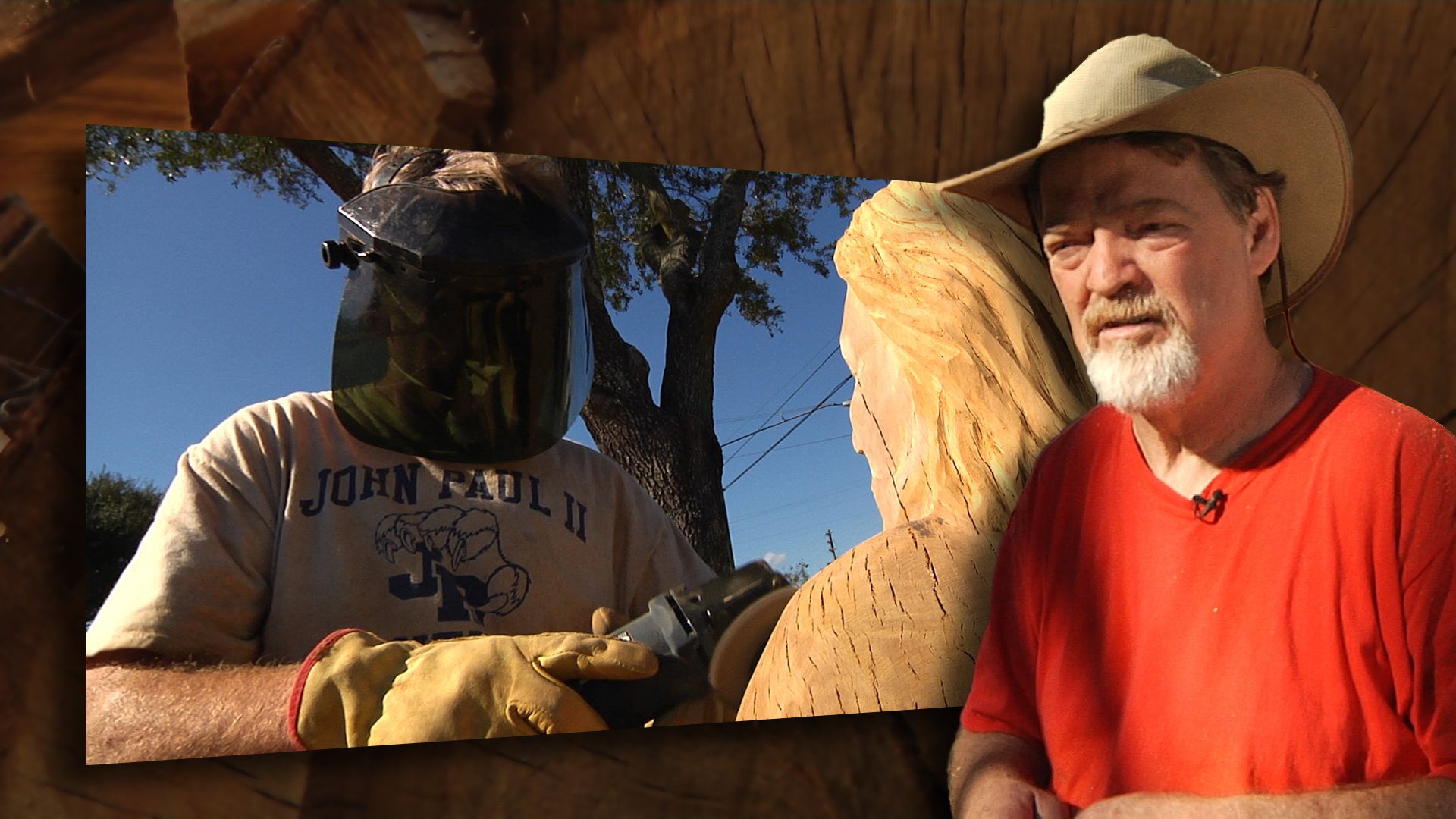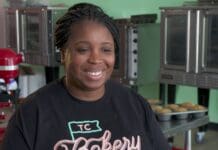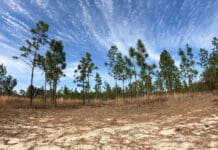

Earlier this year, the very old, and unfortunately ill, oak tree in front of the Leroy Collins Public Library in Tallahassee had to be cut down. It had been around almost as long as the city of Tallahassee itself – but that’s not the end for this tree.
John Birch is the sculptor Leon County has commissioned to create public art out of the remains of the compromised old oak in front of the library. John is a self-trained artist, introduced to wood and power tools in his younger days by his father, who was a general contractor.
His dad worked with plywood a lot and really helped John appreciate it. He’s glued things together and bent the wood to shape it. The grain of wood tells stories to John.
John’s process generally starts with the rough and coarse, evolving to the refined.
“The tools that I use… of course, initially it’s a chainsaw. I will use some tools that’s made by King Arthur Tools and it’s a chainsaw chain, goes on an angle grinder. It doesn’t throw oil anywhere. It’s easy to control,” says John. “He’s also got some other tools and pretty soon I get down to sanding discs. And I do a lot of sanding – anywhere from a seven-inch disc to a two-inch disc. It takes… the part from being rough to smooth usually takes twice as much time because if I’m going to make it as smooth as some of my pieces are, I want it to feel soft and it takes a lot of time to sand it down. I have to go to a four hundred grit paper at least, to make it really soft.”
Sculpting this way is an interpretive process. By reading the wood, John interprets the shapes that can emerge.
“The tree has a whole lot to do with what it becomes. Fifty to seventy percent of my time is looking at the tree. I may make two or three cuts, take a big chunk out and then stand back, walk around, look at it… because all the sudden, I’ll see a rotten spot,” John explains.
Rotten spots and cracks can change how he works with the wood. Because the nature of his art is subtractive, one small mistake with a power tool can severely alter the outcome of the piece.
John Birch says “I have to analyze the tree, understand it, making cuts… a piece I’m working on now is Christ holding a baby. Originally, the baby was going to be a five year-old, but it turned out that the heart of the tree was right where the toddler was going to be, so I had to move it. And I have to be very cautious when I’m carving to shape the top of it going down and not undercut it until I know that the top part of it is good. If I were to shape a head and the shoulders and then cut under the elbows – well what happens if I accidentally shorten his head by mistake, then I can’t lengthen the arms. I can’t move those elbows down. So often, I’ll just draw a line either with chalk or sometimes with my chainsaw to let me know where I think it’s going to go.”
As far as the Library Oak project is concerned, John is still in the interpretive stage. Though he has some solid ideas about what he would like to carve, there are a few unknowns to navigate.
“When I cut the tree down, there was a little, tiny rotten spot. Now, I had an idea I was going to put a child reading. I enjoy reading. It’s a library, figure a child reading. And I was thinking of a tree fort. I’m going to carve a tree out of this tree with a tree fort… and maybe another child reading. However, the other day I brought my drill over to drill holes in it to see if it is solid – and there is a big hollow spot inside that tree, so that has probably changed drastically what I’m going to do with that tree,” says John. “At this point, I was thinking ‘well, heck – why not make it into a castle that you can walk inside of? It’s got the hollow spot.’ So I need to get in there and I need to carve out as much of that rot, to see how far that rot goes. It may be strong enough and thick enough on one side that I can still carve a person reading with a tree going up. But I need to find out what’s inside it first.”
The Library Tree carving will reveal itself over a period of months, and as it nears completion, WFSU will return to visit with John Birch and have a look at the Library’s new work of art.
Mike Plummer is a content producer and editor for television at WFSU Public Media. He spent 25 years in commercial television as an art director, commercial director, promotion manager, station manager and creative services director before coming to WFSU in 2008. Mike likes to find the “unusual” or “out of the ordinary” stories in our Local Routes. He says the best part of his job is getting to know people he would otherwise probably not get a chance to meet. Mike is widowed, has a rescue dog named Dexter, and is constantly at war with the vines growing in his backyard.





